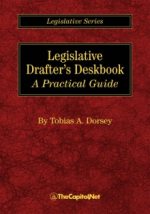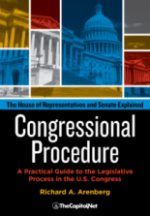While there is often a lot of debate and controversy leading up to the passage of a piece of legislation, that is only the beginning. The federal government must then implement the legislation once it becomes law. The process that handles the implementation of law is known as the regulatory process, which involves a variety of policies and procedures. An agency within the federal government is assigned with oversight regarding the regulation of these policies and procedures. The regulatory process provides for the definitions, interpretations and provisions regarding the enforcement or compliance of legislation once it becomes a new law.

It is common for Congress to delegate quasi-legislative authority to executive agencies so that laws can be implemented. Under the exercise of this authority, departments and agencies usually make rules that involve drafting proposed rules (rulemaking), seeking public comment on those proposed rules, and then issuing rules and regulations.
The public can become involved in the regulatory process at several junctures. Involvement can begin by paying attention to the notices of intent that are provided by agencies regarding the rule making and review process. This notice sets the time frame during which rules will be either established or amended. In addition, specific dates are set during which public hearings are held and written comments can be submitted.
During this time, the public can submit written comments. Most agencies that have very specific requirements regarding the submission format for written comments. In many instances, public hearings will be conducted, during which time individuals who are in favor of as well as those  opposed to the proposed rule may testify. The reviewing agency considers all comments that are submitted and also responds to all written comments before a new rule or a final revised rule is completed.
opposed to the proposed rule may testify. The reviewing agency considers all comments that are submitted and also responds to all written comments before a new rule or a final revised rule is completed.
Understanding in advance how that process works and how you can become involved gives you the best chances of seeing the changes you are in favor of to be implemented. Our course, Understanding the Regulatory Process, can provide you with more in-depth information about becoming involved in the regulatory process.
Source: Section 11.5 Federal Register, from Congressional Deskbook: The Practical and Comprehensive Guide to Congress, by Michael L. Koempel and Judy Schneider
For information about the legislative and regulatory processes, see
- Congressional Deskbook: The Practical and Comprehensive Guide to Congress, by Michael L. Koempel and Judy Schneider
- How to Monitor and Influence Policy at the Federal Level Chart
- Federal Regulatory Process Poster, by Kenneth Ackerman
- Our live courses in Washington, DC:
- Our Capitol Learning Audio Courses:
- Understanding the Regulatory Process, A Five Course Series
- The Federal Regulatory Process: Piecing Together the Regulatory Puzzle
- Congress, the Legislative Process, and the Fundamentals of Lawmaking, A Nine Course Series
- Congressional Committees and Party Leadership: Who Controls the Congressional Agenda
- House Rules Committee: Gatekeeper to the Floor
- Understanding the Path of Legislation
More
- Federal Register – GPO Access
- Code of Federal Regulations (CFR) – GPO Access
- Electronic Code of Federal Regulations (e-CFR) – GPO Access
- Regulatory Research Resources – from TheCapitol.Net
Courses
- Congressional Operations Briefing – Capitol Hill Workshop
- Drafting Federal Legislation and Amendments
- Writing for Government and Business: Critical Thinking and Writing
- Custom, On-Site Training
- Drafting Effective Federal Legislation and Amendments in a Nutshell, Audio Course on CD
- Congress, the Legislative Process, and the Fundamentals of Lawmaking Series, a Nine-Course series on CD
Publications

Legislative Drafter’s Deskbook: A Practical Guide

Pocket Constitution

Citizen’s Handbook to Influencing Elected Officials: A Guide for Citizen Lobbyists and Grassroots Advocates

Congressional Procedure
CongressionalGlossary.com, from TheCapitol.Net
For more than 40 years, TheCapitol.Net and its predecessor, Congressional Quarterly Executive Conferences, have been teaching professionals from government, military, business, and NGOs about the dynamics and operations of the legislative and executive branches and how to work with them.
Our custom on-site and online training, publications, and audio courses include congressional operations, legislative and budget process, communication and advocacy, media and public relations, testifying before Congress, research skills, legislative drafting, critical thinking and writing, and more.
TheCapitol.Net is on the GSA Schedule, MAS, for custom on-site and online training. GSA Contract GS02F0192X
TheCapitol.Net is now owned by the Sunwater Institute.
Teaching how Washington and Congress work ™

